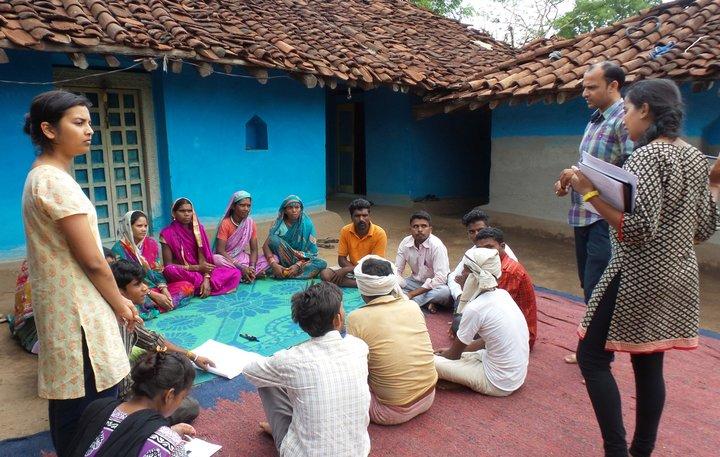Press and News Adding colour to rural diets year round with the Seasonal Food Availability Booklet

From focus group to plate: a new tool developed by Bioversity International to enhance the use of local agrobiodiversity for health and nutrition
A hot breeze blows underneath a thatched roof, ruffling the large papers filled with check marks stuck to the rammed earth walls. Participants in Mali have spent the day recounting the availability of the locally available fruits and vegetables. As the workshop winds down, a lone hand raises and a participant asks “but how will this process help us?”
As researchers and scientists, we often encounter the challenge of making our research accessible to and useful for the very people for whom it was designed. This is exactly what we have tried to do with the Seasonal Availability Calendar Booklet – a template to transform data into an adaptable tool that can be presented back to communities within only a few months after data collection.
Developing seasonal calendars
Seasonal availability calendars for fruits and vegetables were developed through a participatory process with communities and local partners in Guatemala, India and Mali as part of the project ‘Linking agrobiodiversity value chains, climate adaptation and nutrition: Empowering the poor to manage risk' supported by the International Fund for Agricultural Development and the European Union*. The project aims to revitalize the use of local agrobiodiversity, which typically includes a large assortment of nutritious species that are well adapted to local conditions but which are underutilized for a variety of reasons, including lack of awareness and promotion.
In each country, baseline household assessments revealed periods of seasonal food insecurity and poor diet diversity with low consumption of fruits and vegetables. The seasonal calendars assess the potential for local agrobiodiversity to fill these gaps and encourage greater consumption of local fruits and vegetables for improved diet quality year round. Cultivated and wild-sourced species are included in the calendars because, in the study areas, both have important contributions to household diets.

Encouraging consumption of locally available and diverse fruits and vegetables
The booklet opens with basic nutrition information derived from national guidelines, a summary of local diet quality and consumption levels of fruits and vegetables found in the baseline assessment, and recommendations on how to improve diet quality with local agrobiodiversity. To increase the quantity and variety of fruits and vegetables in the diet, the booklet suggests simple interventions from farm to fork, such as using the calendar to plan the home garden to have fresh fruits and vegetables all year round and using them to add colour to traditional dishes. Simple graphics help communicate these concise and simple take-away messages.
The booklet folds out as a poster with seasonal calendars specific to each site, showing the availability of fruits and vegetables in each month. The species are indicated with local names and easily recognizable pictures that have been verified by communities. The calendar categorizes local fruits and vegetables into the UN Food and Agriculture Organization Minimum Dietary Diversity for Women food groups, to distinguish species with unique nutritional contributions to the diet, thereby providing basic information on the importance of dark green leafy vegetables, vitamin A-rich fruits and vegetables, and other fruits and vegetables. The poster encourages consumption of fruits and vegetables from different groups for more diverse, healthy and nutritious diets.
Colourful and lively, the booklet can also be easily adapted, modified and scaled-out to many different contexts. Not only is the seasonal availability calendar useful for local community members but it can also be a tool for decision-makers. As this booklet builds on national materials, it can be adopted by local governments and regional bodies responsible for developing food dietary guidelines. This has already happened in Mali, where national food-based dietary guidelines did not exist. Working with local partners, we developed the nutrition information provided in the seasonal availability calendar booklet and, after review, it was approved and endorsed by the national nutrition department. The booklets are currently being disseminated back to the communities that helped draft them.
Download the Seasonal Food Availability Booklet
*The project is supported by the International Fund for Agricultural Development (IFAD); the European Union; and the CGIAR Research Programmes on Climate Change, Agriculture and Food Security (CCAFS) and Agriculture for Nutrition and Health (A4NH), which are supported by CGIAR Trust Fund Donors. It is coordinated at the global level by Bioversity International and in the target countries by Institut D’Economie Rurale (Mali), Universidad del Valle del Guatemala, and Action for Social Advancement (India). The Indigenous Partnership for Agrobiodiversity and Food Sovereignty, which has a network of communities that can be leveraged for horizontal learning, is also involved.

